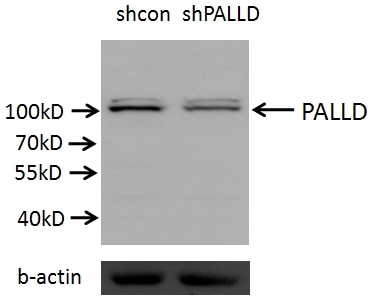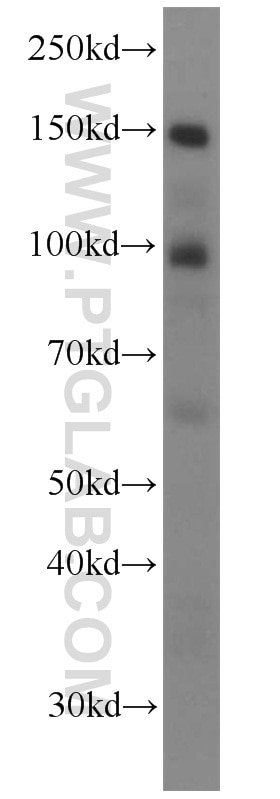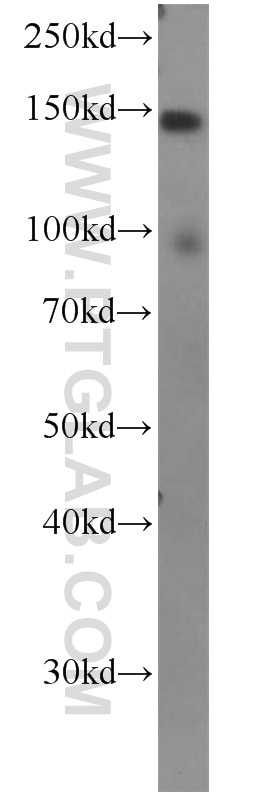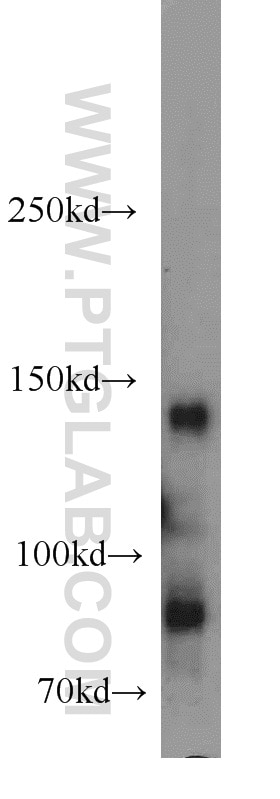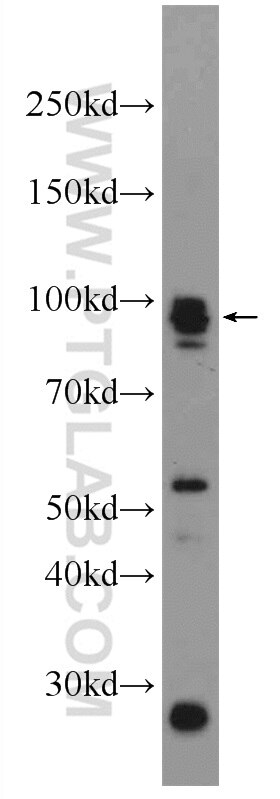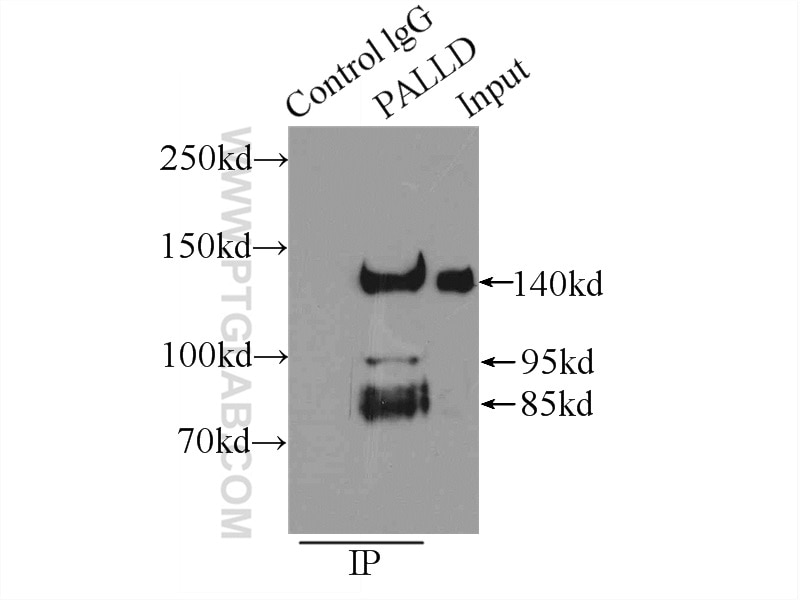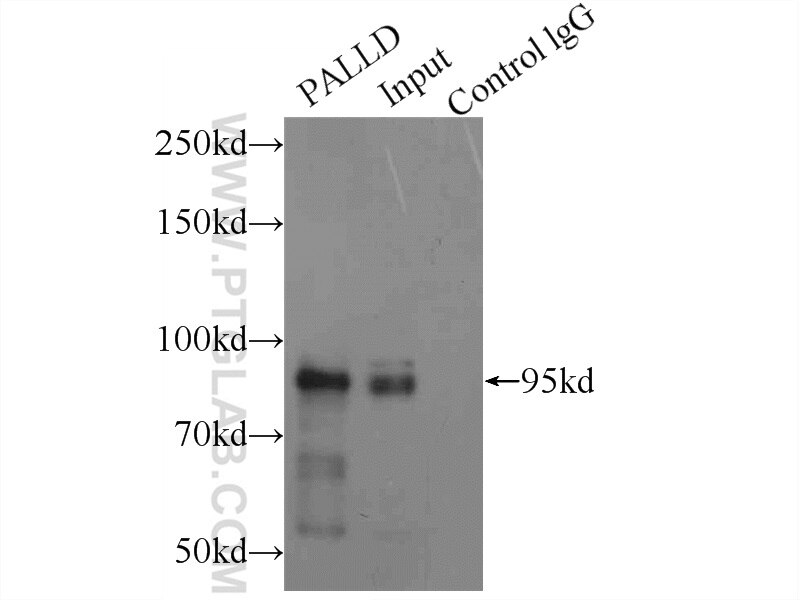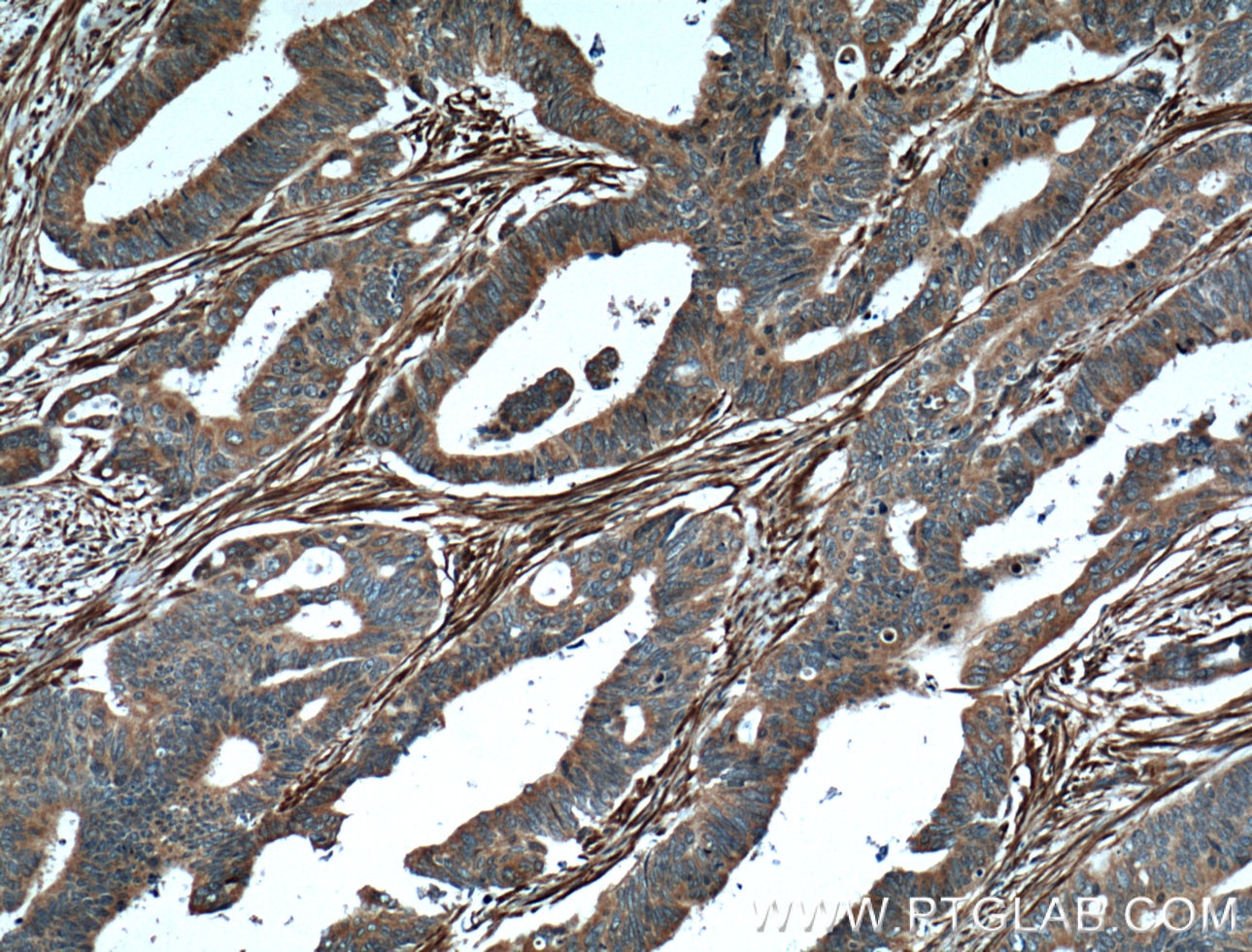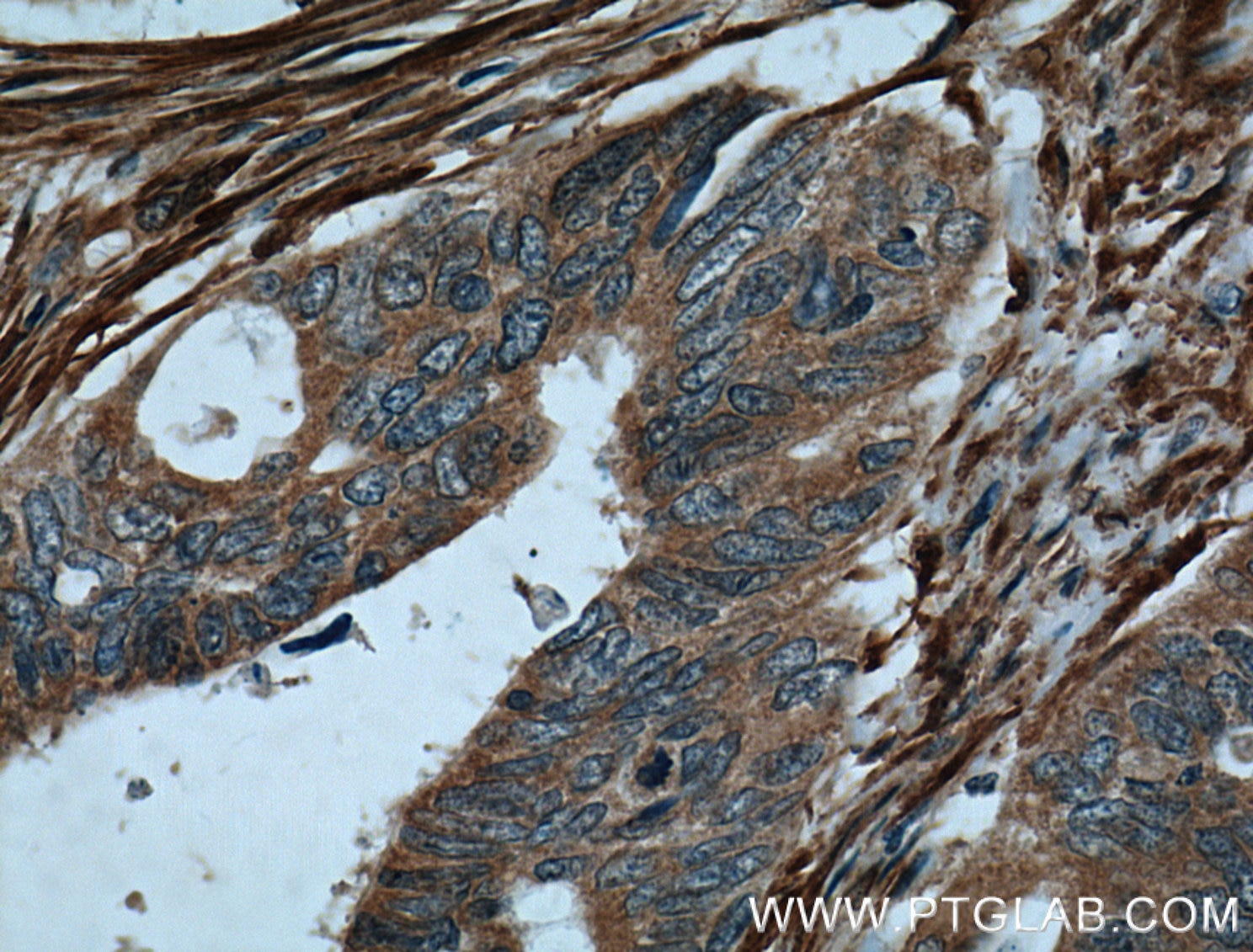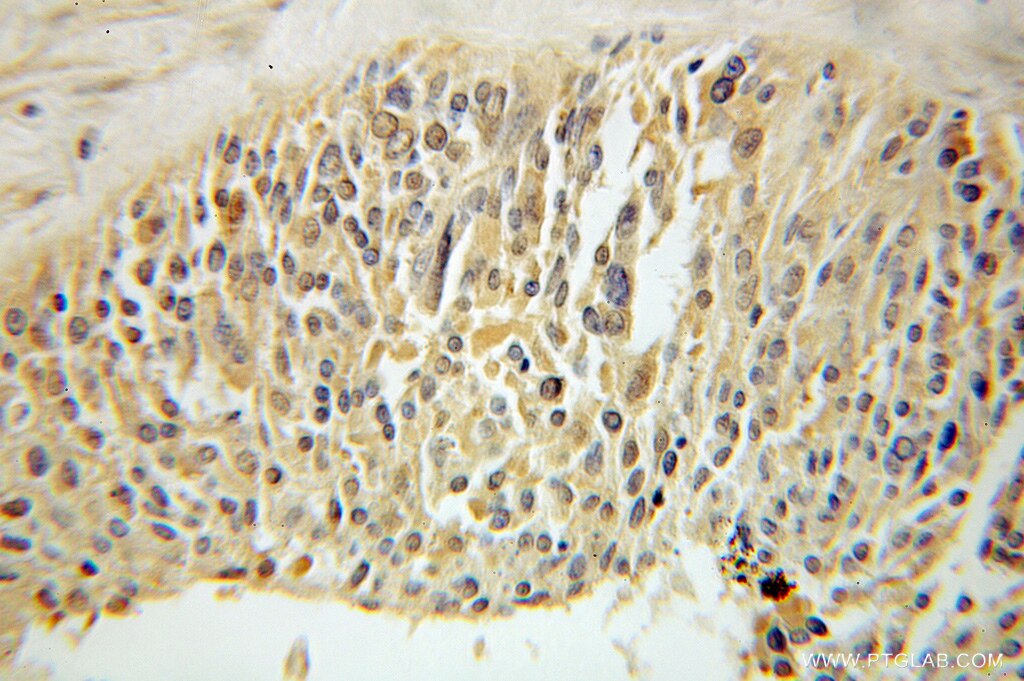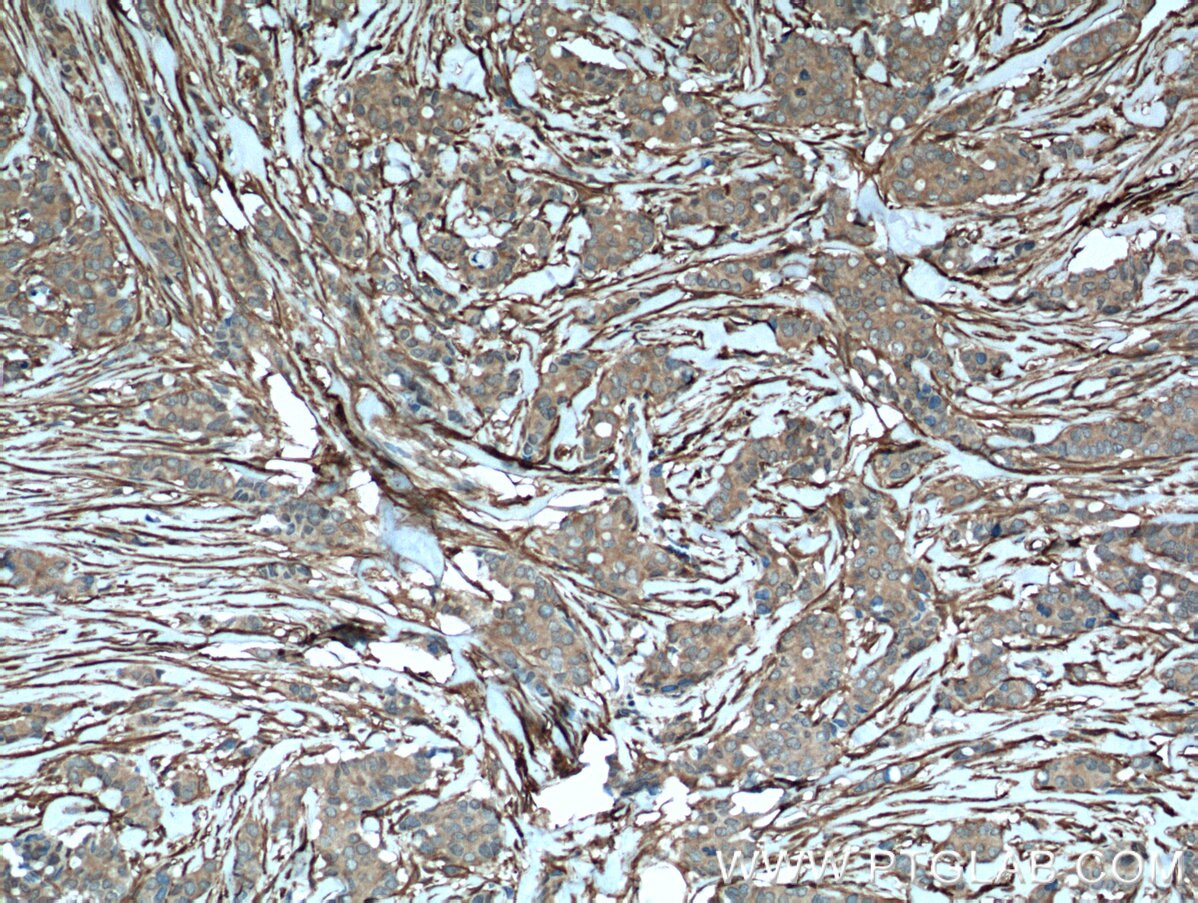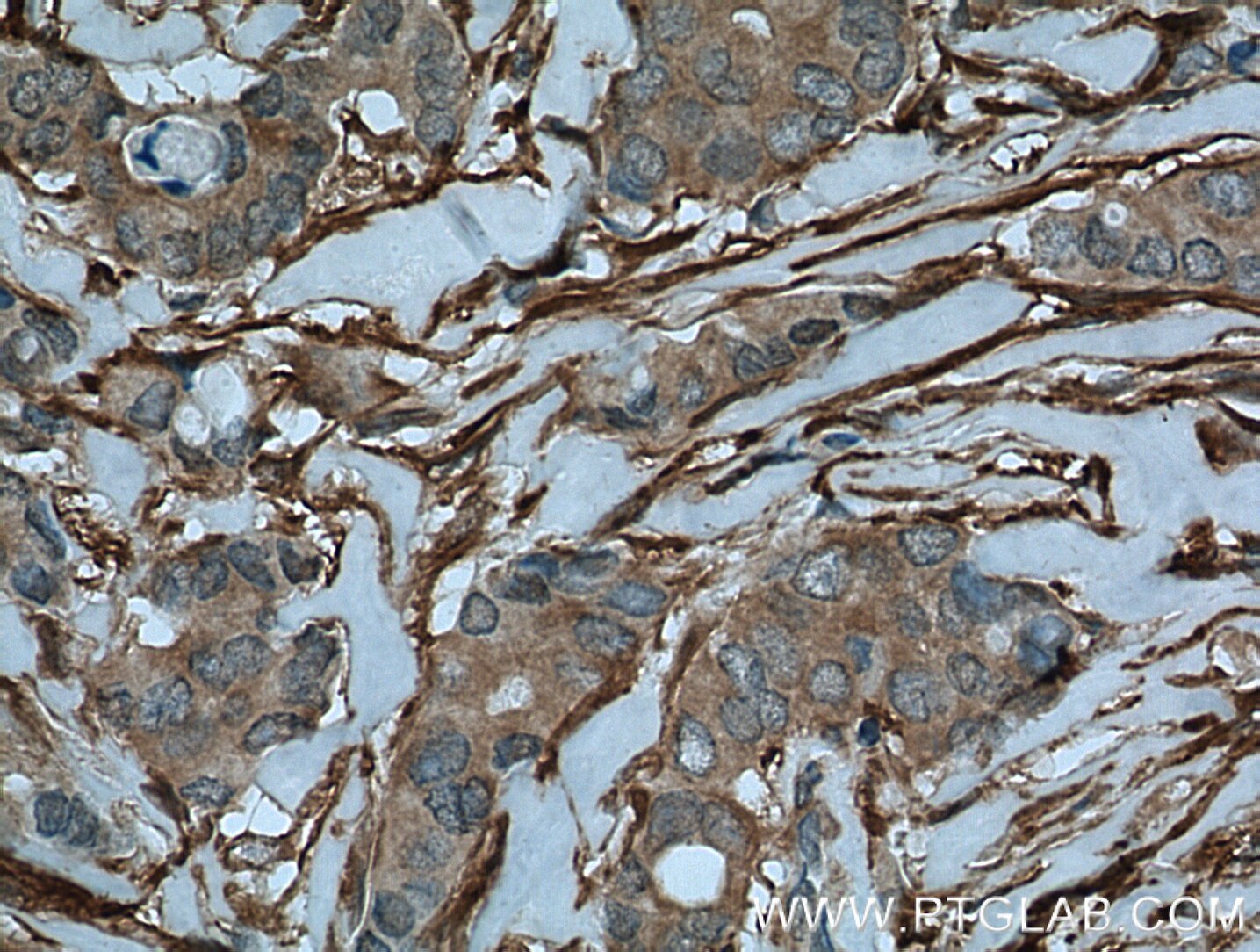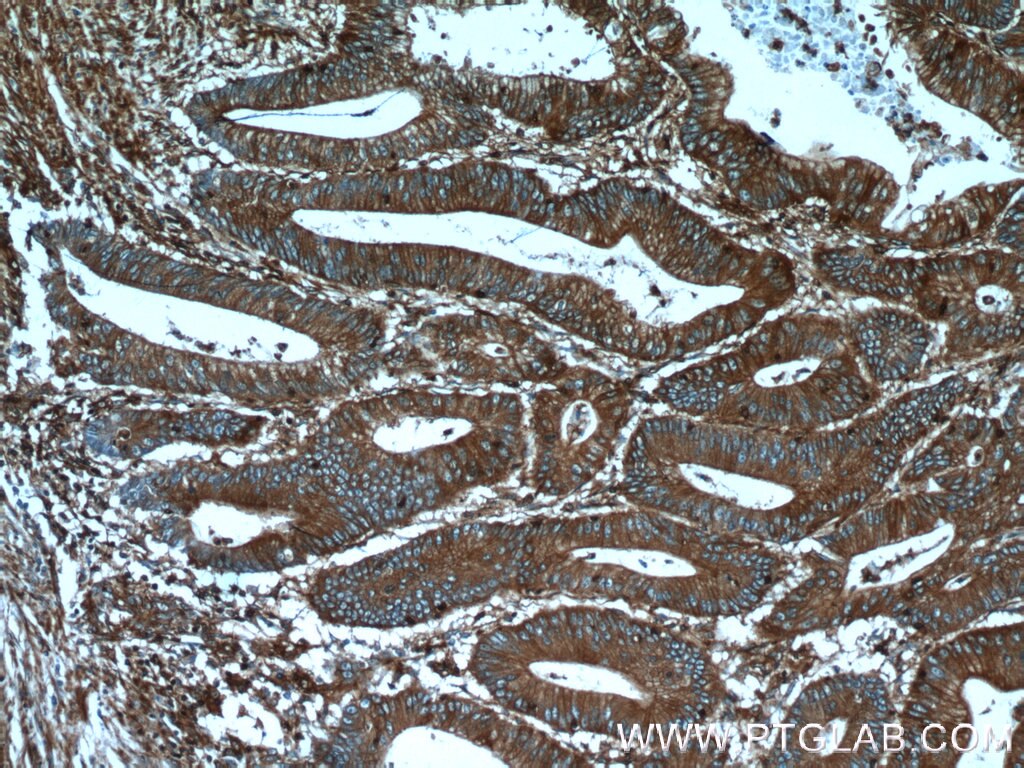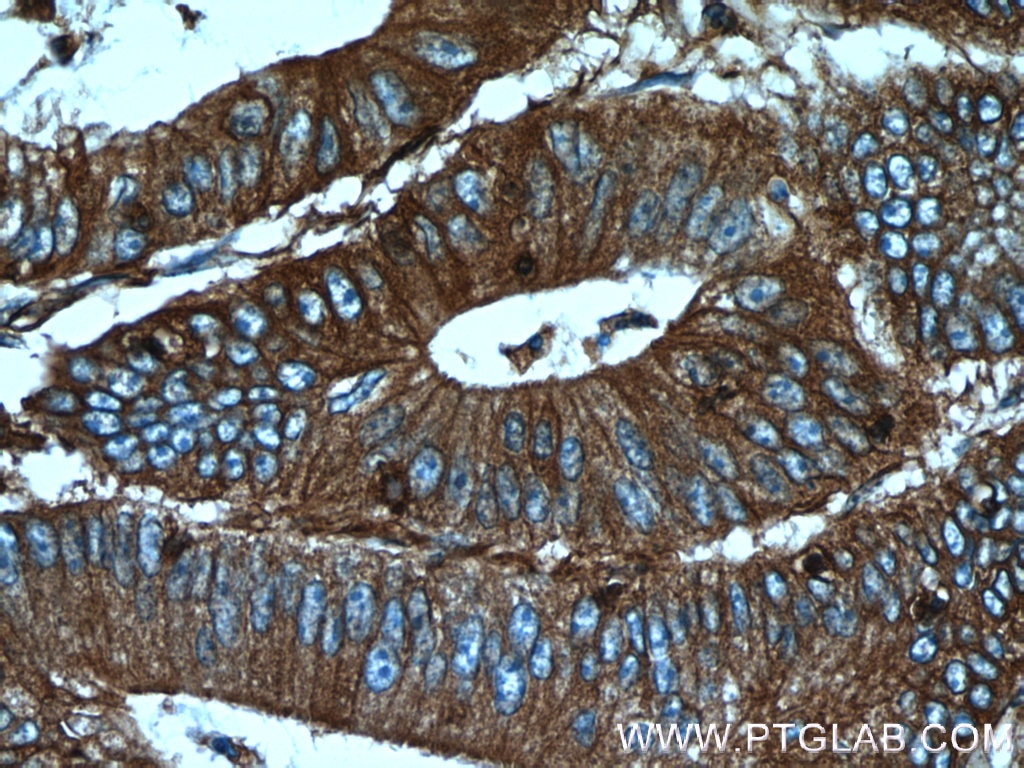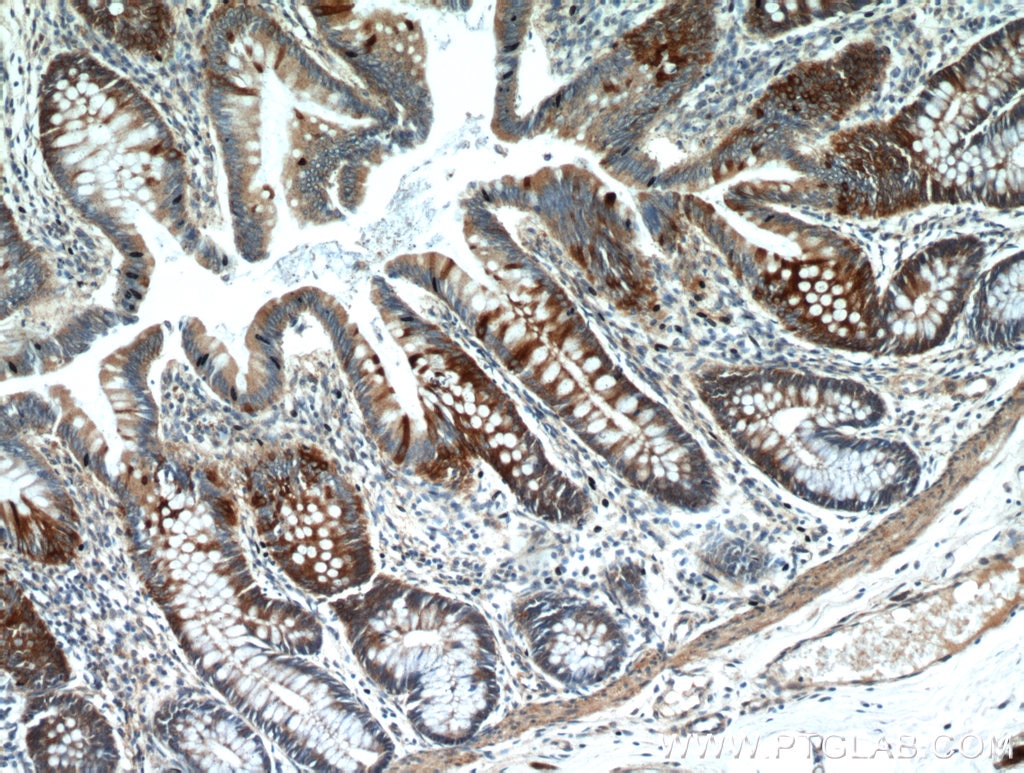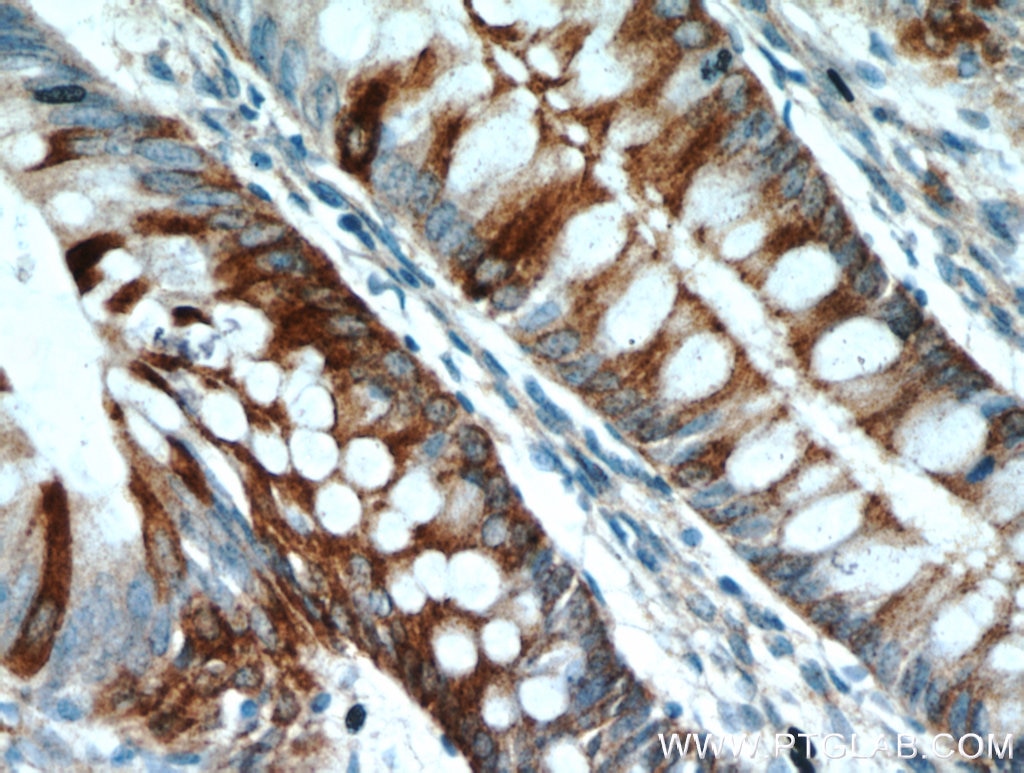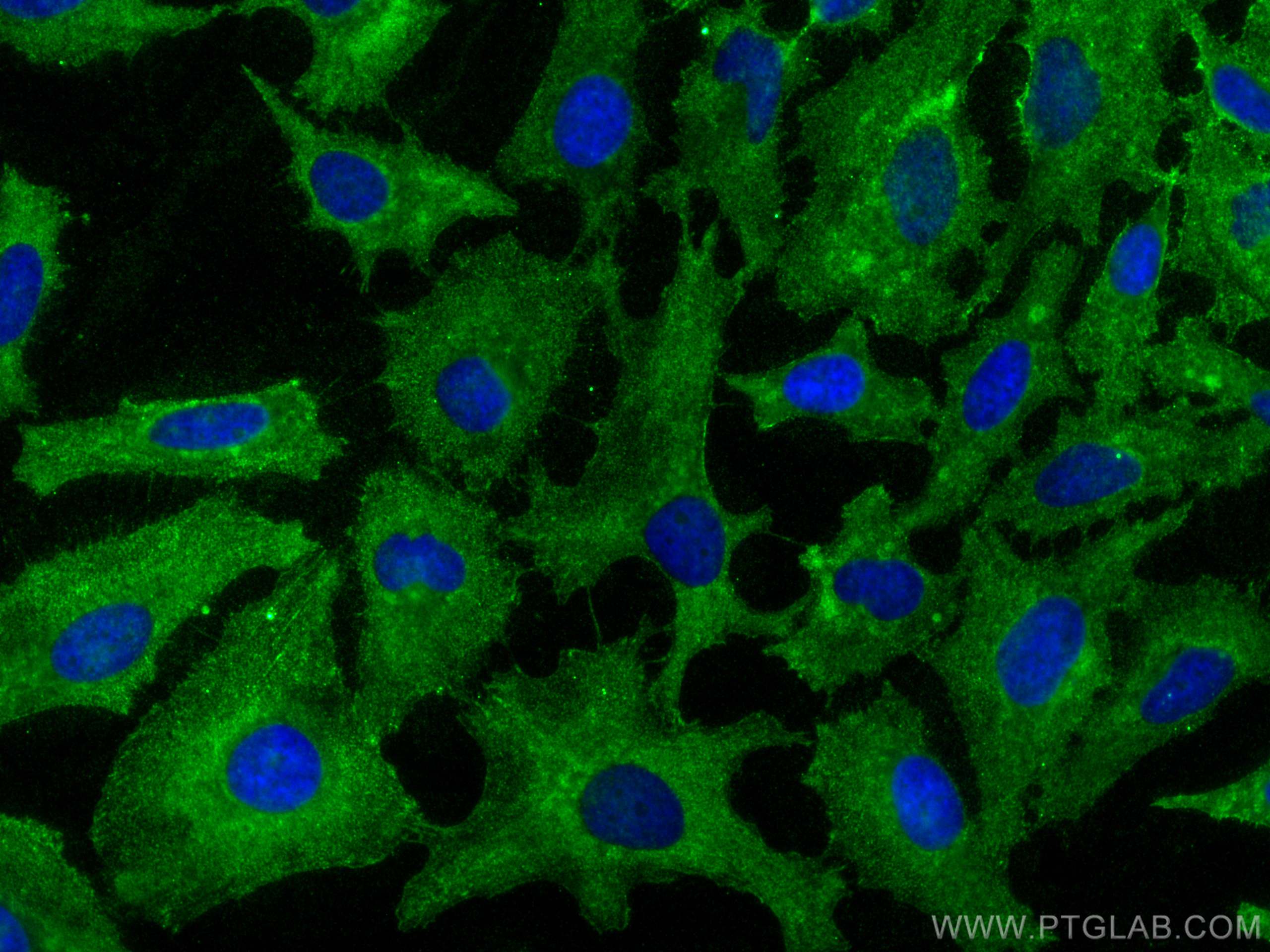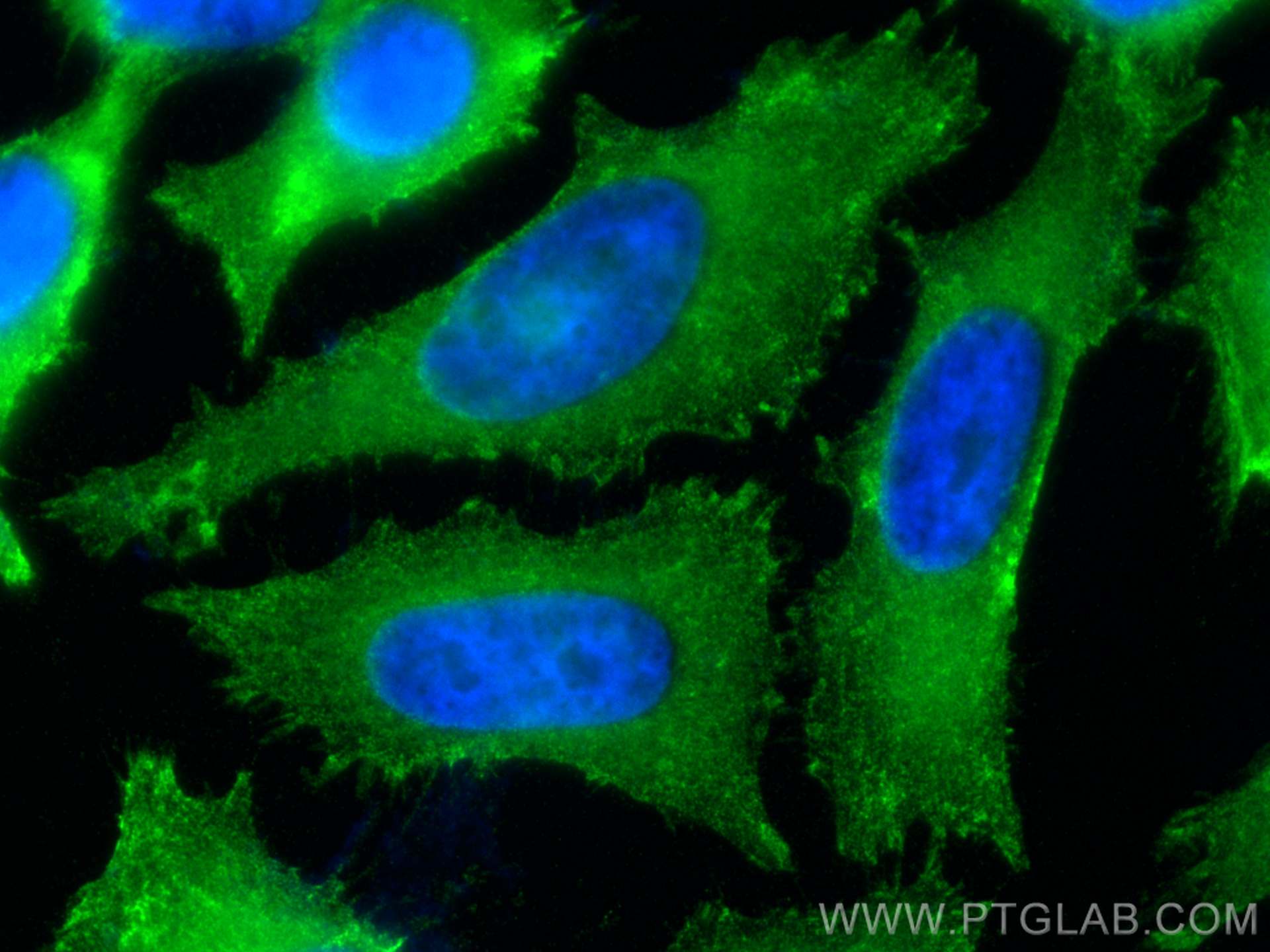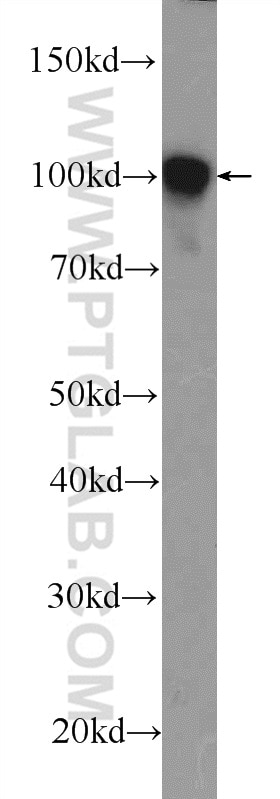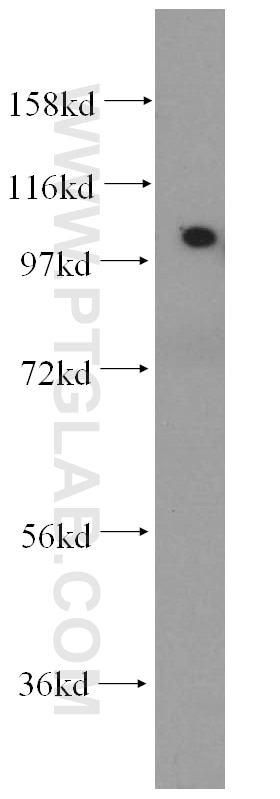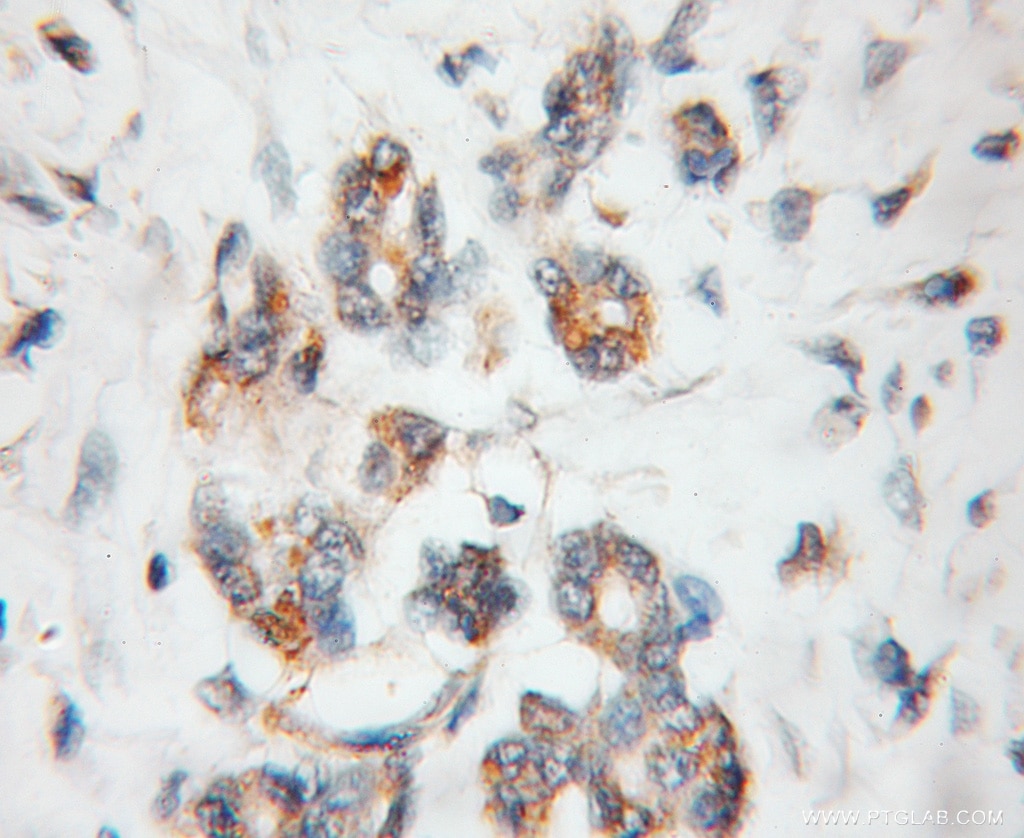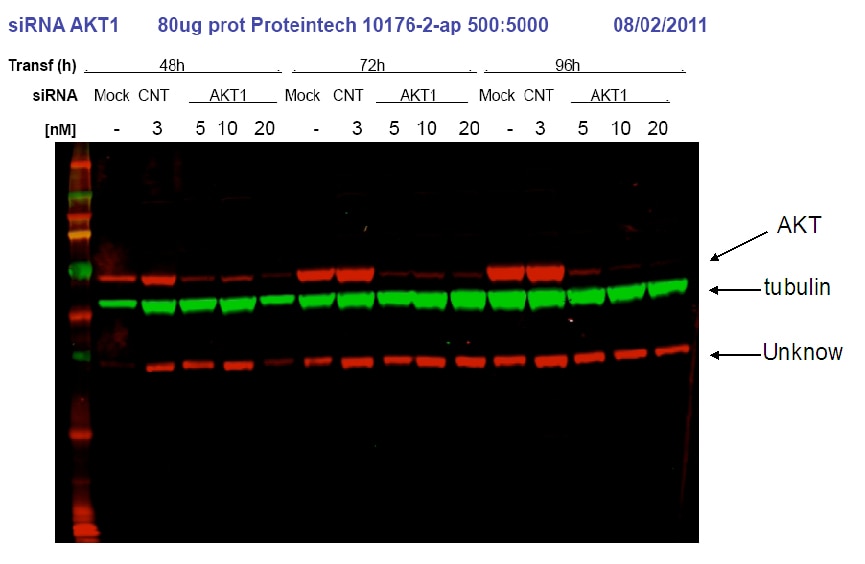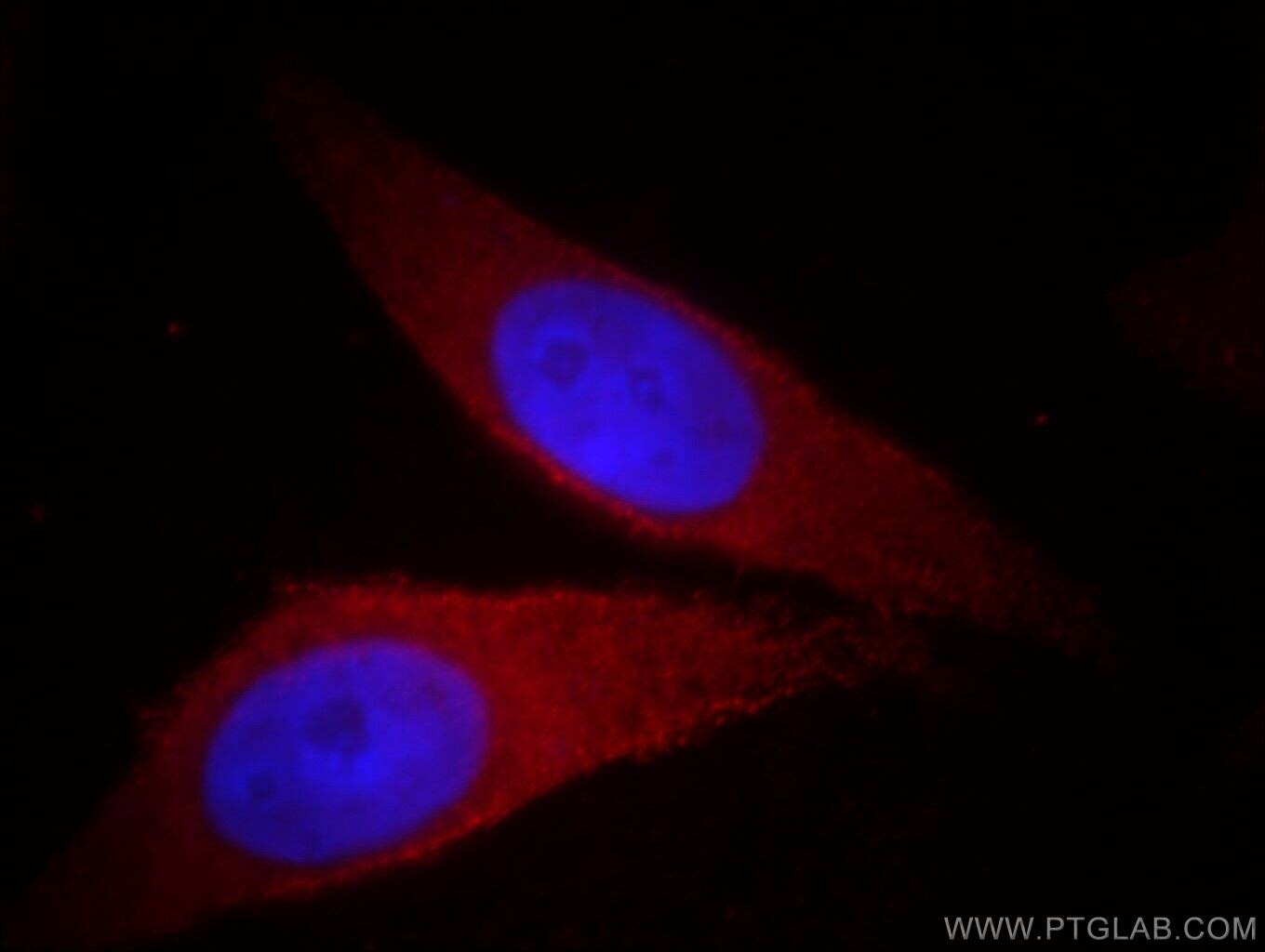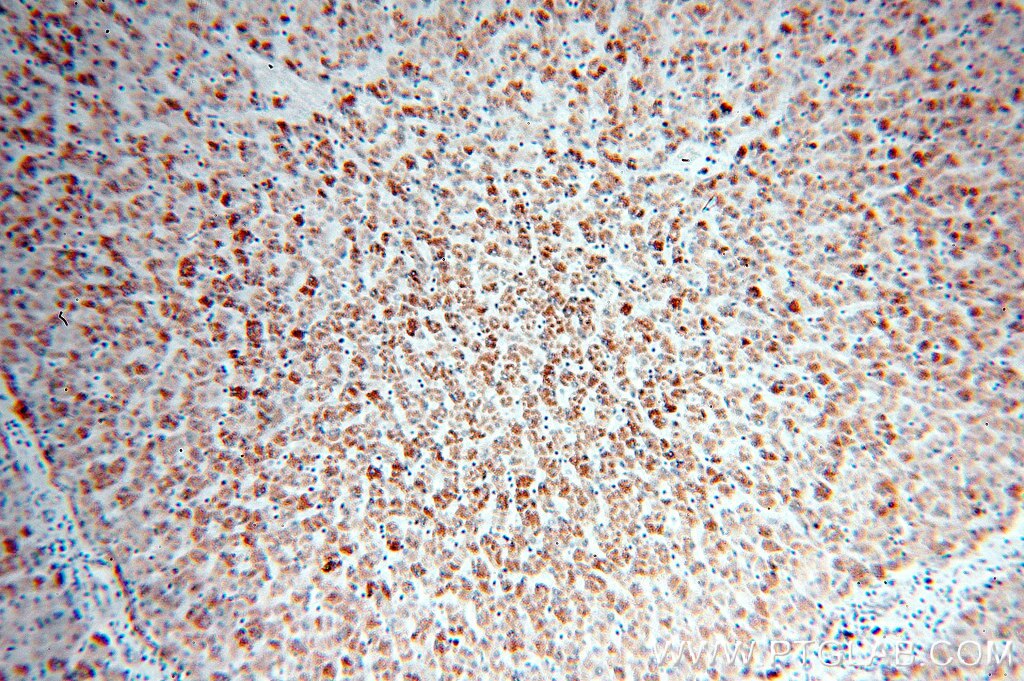- Phare
- Validé par KD/KO
Anticorps Polyclonal de lapin anti-Palladin
Palladin Polyclonal Antibody for WB, IP, IF, IHC, ELISA
Hôte / Isotype
Lapin / IgG
Réactivité testée
Humain, souris et plus (1)
Applications
WB, IHC, IF/ICC, IP, COIP, ELISA
Conjugaison
Non conjugué
N° de cat : 10853-1-AP
Synonymes
Galerie de données de validation
Applications testées
| Résultats positifs en WB | cellules HeLa, cellules A549 |
| Résultats positifs en IP | cellules HeLa, cellules HEK-293 |
| Résultats positifs en IHC | tissu de cancer du côlon humain, tissu de cancer du sein humain, tissu de côlon humain, tissu de tumeur ovarienne humain il est suggéré de démasquer l'antigène avec un tampon de TE buffer pH 9.0; (*) À défaut, 'le démasquage de l'antigène peut être 'effectué avec un tampon citrate pH 6,0. |
| Résultats positifs en IF/ICC | cellules HeLa, |
Dilution recommandée
| Application | Dilution |
|---|---|
| Western Blot (WB) | WB : 1:1000-1:4000 |
| Immunoprécipitation (IP) | IP : 0.5-4.0 ug for 1.0-3.0 mg of total protein lysate |
| Immunohistochimie (IHC) | IHC : 1:50-1:500 |
| Immunofluorescence (IF)/ICC | IF/ICC : 1:50-1:500 |
| It is recommended that this reagent should be titrated in each testing system to obtain optimal results. | |
| Sample-dependent, check data in validation data gallery | |
Applications publiées
| KD/KO | See 7 publications below |
| WB | See 56 publications below |
| IHC | See 12 publications below |
| IF | See 43 publications below |
| IP | See 2 publications below |
| CoIP | See 1 publications below |
Informations sur le produit
10853-1-AP cible Palladin dans les applications de WB, IHC, IF/ICC, IP, COIP, ELISA et montre une réactivité avec des échantillons Humain, souris
| Réactivité | Humain, souris |
| Réactivité citée | rat, Humain, souris |
| Hôte / Isotype | Lapin / IgG |
| Clonalité | Polyclonal |
| Type | Anticorps |
| Immunogène | Palladin Protéine recombinante Ag1288 |
| Nom complet | palladin, cytoskeletal associated protein |
| Masse moléculaire calculée | 1383 aa, 151 kDa |
| Poids moléculaire observé | 95 kDa, 140 kDa |
| Numéro d’acquisition GenBank | BC013867 |
| Symbole du gène | palladin |
| Identification du gène (NCBI) | 23022 |
| Conjugaison | Non conjugué |
| Forme | Liquide |
| Méthode de purification | Purification par affinité contre l'antigène |
| Tampon de stockage | PBS avec azoture de sodium à 0,02 % et glycérol à 50 % pH 7,3 |
| Conditions de stockage | Stocker à -20°C. Stable pendant un an après l'expédition. L'aliquotage n'est pas nécessaire pour le stockage à -20oC Les 20ul contiennent 0,1% de BSA. |
Informations générales
Palladin is an actin associated protein serving as a cytoskeleton scaffold, and actin cross linker, localizing at stress fibers, focal adhesions, and other actin based structures. Palladin exists as multiple isoforms through alternative transcription initiation sites and splicing. There are three major isoforms (200, 140, 90-92 kDa) and multiple minor isoforms. Different palladin isoforms are expressed in a tissue-specific pattern during development and in adult organs: the 200 kDa isoform is predominantly expressed in the heart, skeletal muscle, testis and bone; the 140 kDa isoform is widely expressed with the exception of liver, muscle, and skin; the 90-92 kDa isoform is broadly expressed in embryonic tissues and highly expressed in adult smooth muscle tissues (21455759). Recently overexpression of palladin has been linked to the promoted invasive motility in several types of cancers (18978809, 22291919). The 85-90 kDa palladin isoform has been observed predominantly expressed in pancreatic ductal adenocarcinoma (PDA) while a 65 kDa isoform is expressed in normal pancreas and non-PDA tumors (20436683). This antibody, generated against the fragment 999-1383aa of palladin, recognizes most isoforms of this protein, except isoform 6.
Protocole
| Product Specific Protocols | |
|---|---|
| WB protocol for Palladin antibody 10853-1-AP | Download protocol |
| IHC protocol for Palladin antibody 10853-1-AP | Download protocol |
| IF protocol for Palladin antibody 10853-1-AP | Download protocol |
| IP protocol for Palladin antibody 10853-1-AP | Download protocol |
| Standard Protocols | |
|---|---|
| Click here to view our Standard Protocols |
Publications
| Species | Application | Title |
|---|---|---|
Mol Cell The actin-bundling protein palladin is an Akt1-specific substrate that regulates breast cancer cell migration. | ||
Nat Commun Local microRNA delivery targets Palladin and prevents metastatic breast cancer.
| ||
Cell Death Differ lncRNA THAP7-AS1, transcriptionally activated by SP1 and post-transcriptionally stabilized by METTL3-mediated m6A modification, exerts oncogenic properties by improving CUL4B entry into the nucleus. | ||
Cancer Res Cofilin Drives Cell Invasive and Metastatic Responses to TGF-β in Prostate Cancer. | ||
Oncogene Twist1-induced activation of human fibroblasts promotes matrix stiffness by upregulating palladin and collagen α1(VI).
|
